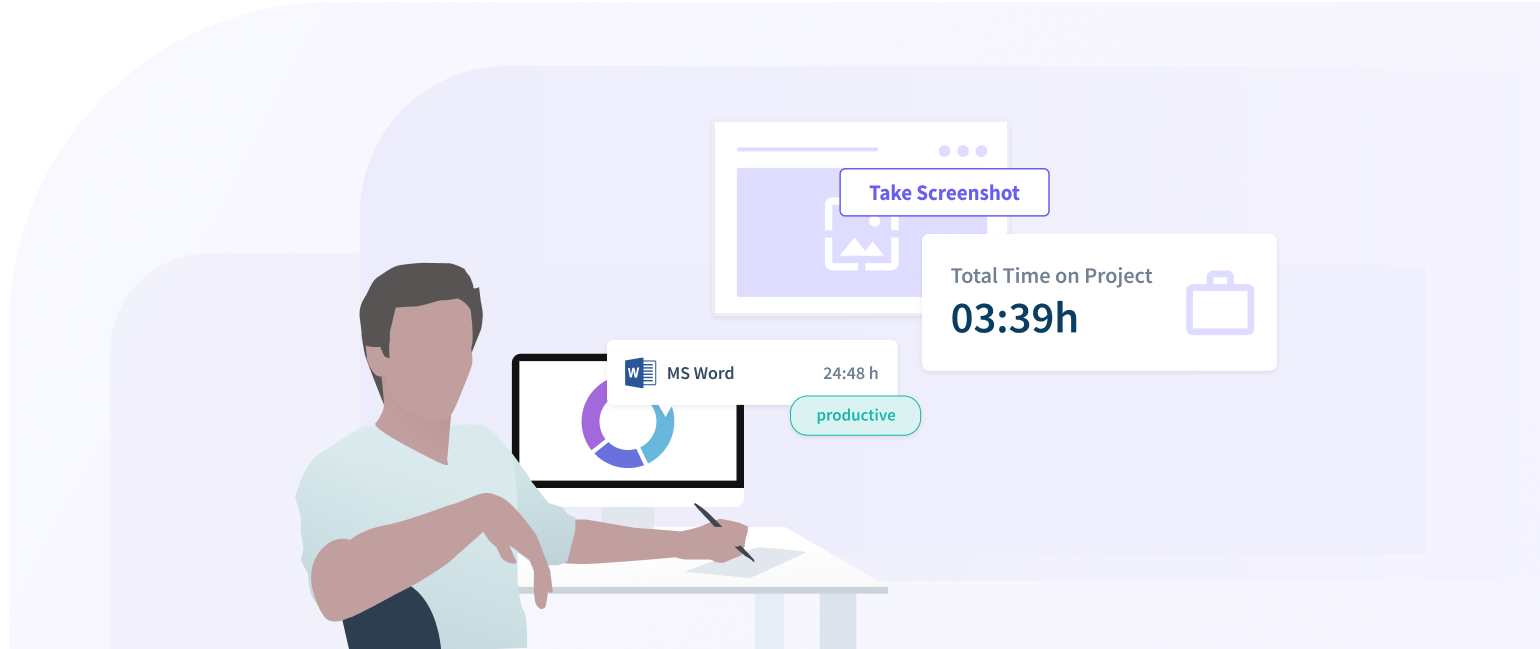Employee monitoring software is a type of software that allows an employer to track and monitor the computer activity of their employees. This can include the websites that employees visit, the time they spend on each task, and the programs they use. Some software can also record keystrokes and take screenshots, which can track the work that an employee is doing.
Employee monitoring software can be controversial, as I can see it as an invasion of privacy. However, some employers argue it is necessary to ensure that employees are using company resources for work-related tasks and to protect sensitive company information. If you are considering using it, it is important to have clear policies in place to ensure that they use ethically it and in a way that respects the privacy of your employees.
Advantages of employee monitoring software:
There are several advantages to using this software, including:
Increased productivity: By tracking and monitoring employee activity, employers can identify any inefficiencies or areas where employees may waste time. This can help managers to identify areas for improvement and to increase productivity.
Better accountability: Allows employers to track and measure employee performance, which can hold employees accountable for their work.
Improved security: This can help employers to protect sensitive company information by tracking employee activity and identifying any potential security breaches.
Compliance: Some industries are required to comply with regulations and standards. It helps to ensure compliance by tracking employee activity and producing reports that can demonstrate compliance.
Remote work oversight: Employee monitoring software can be useful in remote work settings, it allows managers to have visibility and oversight of the work of their remote employees.
It’s important to note that, monitoring software shouldn’t be used as a tool for micromanagement or surveillance, it’s important to have clear policies in place that explain why and how the software is being used, and how employee data will be collected, stored, and used. Also, in many countries, the use of monitoring software is regulated, and it’s important to comply with the regulations.
What are the Considerations when selecting employee monitoring software?
When selecting monitoring software, there are several important considerations to keep in mind, including:
Legal compliance: Make sure the software you choose complies with all relevant laws and regulations, particularly regarding data prevaricate employee rights.
Functionality: Consider what specific features and capabilities you need the software to have in order to meet your business needs. For example, some software may have advanced tracking and reporting capabilities, while others may focus on website and application usage.
Integration: Look for software that can integrate with other systems your business already uses, such as project management or payroll systems.
scalability: Consider if the software you select can grow with your organization, in case of future growth and scaling.
Ease of use: Make sure the software is easy to install and use for both administrators and employees. It should have clear interfaces, detailed documentation and easy-to-understand reports.
Support: Evaluate the level of technical support and customer service that is provided by the vendor.
Cost: Consider the cost of the software, including any additional costs, such as training, implementation, and maintenance. Compare this to the benefits that the software will provide to your organization.
Privacy policies: Understand the data collection, storage, and usage policies of the software vendor. Make sure it aligns with your company’s policies and regulations.
It’s important to weigh the pros and cons of using employee monitoring software and consult with legal and IT teams, as well as employees themselves, to make the decision that’s best for your organization. It’s important to communicate clearly to your team why and how you are going to use the software and what are the rights of the employees.




